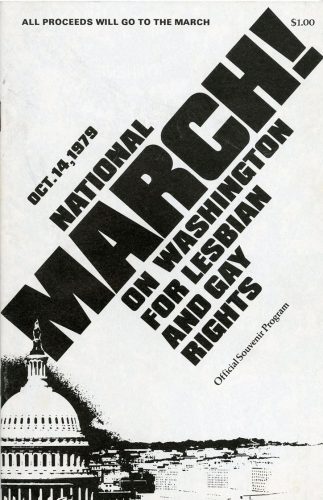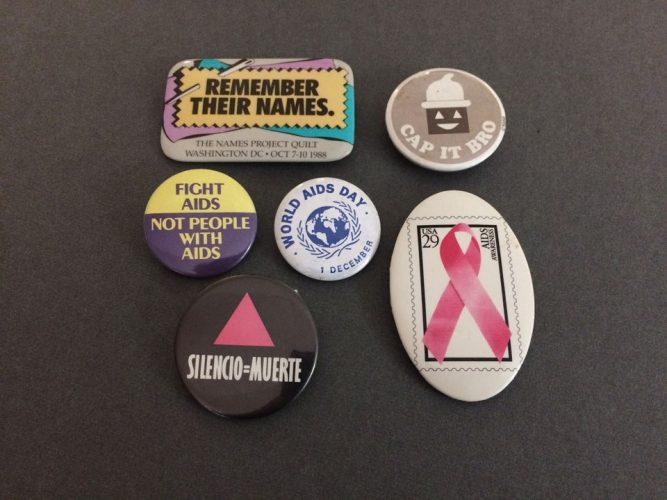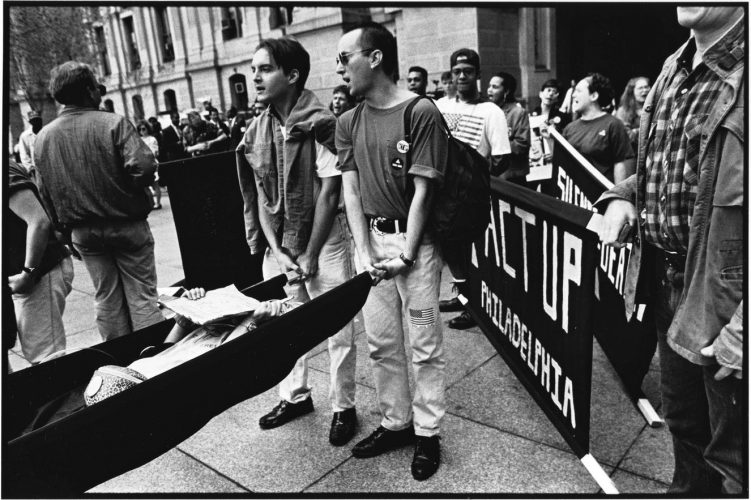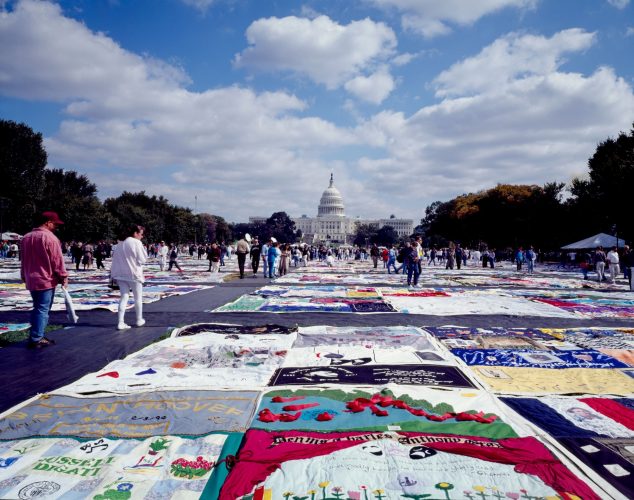Reacting to a growing anti-gay climate, on October 14, 1979, some 100,000 LGBT people and their allies march on Washington, and demand equal rights. It is the largest gay rights march to date.
The AIDS crisis brings a new wave of LGBT activism and visibility in the 1980s. Organizations like the AIDS Coalition to Unleash Power (ACT UP) mount protests to bring issues before the public. As they do, fights over such matters as insurance benefits bring LGBT issues before the courts.
At the 1987 March on Washington, the AIDS quilt brought home, in a personal and public way, the devastation and impact of the epidemic.



